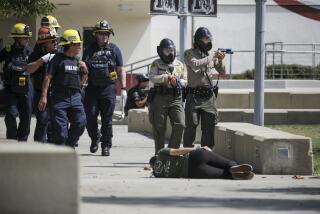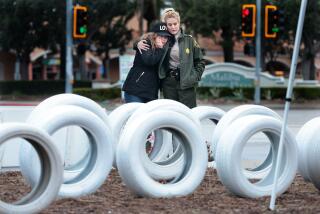Committee OKs Seat Belt Bill for School Buses
SACRAMENTO — The Assembly Ways and Means Committee on Wednesday approved a bill that would require the installation of seat belts in new school buses after June 30, 1987, but only if a California Highway Patrol study determines that the belts would reduce injuries.
If the CHP found that seat belts would improve the safety of students, school districts would be ordered to equip any new buses with the restraints.
The measure, by Assemblywoman Gloria Molina (D-Los Angeles), was endorsed by the Ways and Means Committee on a 23-0 vote and sent to the Assembly floor.
Last week, the Assembly Transportation Committee approved the proposal, with the understanding that Molina would add the study provision in the Ways and Means Committee.
The study would look into the compatibility of seat belts with new school buses and the effect of the belts on the frequency and severity of injuries and fatalities in school bus accidents. The CHP, with the advice of the Department of Education, would contract for the study.
Molina said that seat belts would add about $1,800 to the cost of new school buses, which now run about $90,000. In California, about 865,000 pupils are transported each school day to and from school at public expense in more than 15,000 buses.
State officials say that riding in a school bus is safer than riding in an automobile, judging from the relatively few accidents involving school buses. However, the CHP and the Department of Education say that pressure to improve the safety of buses has been mounting.
Last year, the Legislature passed a bill that would have banned the use of buses built before 1977, when federal safety standards were upgraded. Gov. George Deukmejian, citing the high cost, vetoed the measure. But the governor has proposed his own school bus safety program this year.
Legislators have been presented with conflicting testimony about the impact of seat belts on school buses. A 1984 Canadian study found, for example, that in head-on collisions the use of safety belts would probably result in more head injuries, because children’s heads would strike the back of the seat in front of them while they were restrained at the waist.
But Assemblywoman Maxine Waters (D-Los Angeles), a member of the Ways and Means Committee, made the case for seat belts by pointing out that they are required on cars.
“If the general public should have to have them, school kids should have them,” Waters asserted. And she predicted that any study conducted by the CHP will show that the belts will reduce injuries and deaths.
Few Requiring Them
School districts now have the option of requiring seat belts on new school buses, but few have done so. The Mendocino Unified School District on the Northern California coast last fall launched a pilot program to put seat belts in school buses.
Don Kirkpatrick, superintendent of the small rural district, said, “We feel if we can start with the younger student and get them to do it, then as they go through grades we’ll have some success” getting them to buckle up.
In an interview, he said the district, with the help of parents, has raised $1,500 for the pilot program. So far, he said, the results have been mixed.
“One bus driver has a dickens of a time getting the kids to wear belts,” he said.
More to Read
Sign up for Essential California
The most important California stories and recommendations in your inbox every morning.
You may occasionally receive promotional content from the Los Angeles Times.









